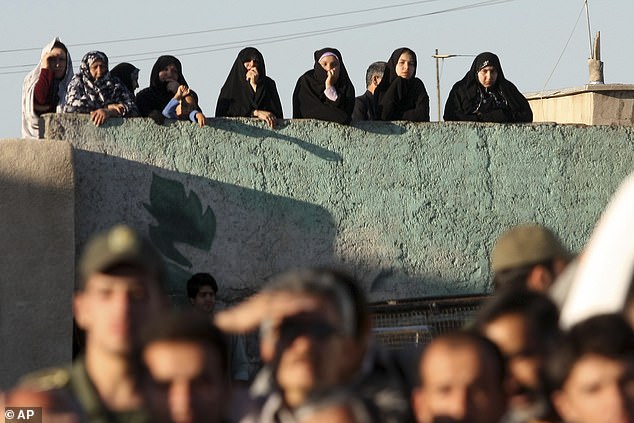An Iranian man has been hanged for a second time by hardline authorities months after his first execution was halted half a minute in, according to a human rights group.
Ahmad Alizadeh was arrested in October 2018 on a murder charge, which he denied, and was sentenced to death, Norway-based Iran Human Rights (IHR), which tracks executions in Iran, said.
The 26-year-old’s death sentence was originally set to be carried out on April 27 in Ghezel Hesar prison in Karaj outside Tehran.
But just 28 seconds into the hanging he was brought down from the gallows when the victim’s family suddenly shouted ‘forgiveness’.
CPR was carried out on his ‘lifeless’ body and he was successfully resuscitated, with the first execution called off, IHR said.


Under Iran’s sharia law, a victim’s family can ask for blood money to spare the life of the perpetrator or also decide to forgive.
However, in many cases the family of the condemned person cannot afford the sum set and the execution goes ahead, according to activists.
Alizadeh remained under the threat of the death penalty in the absence of any deal with the victim’s family for blood money.
He was executed again in the Ghezel Hesar prison on Wednesday morning, IHR said. Executions are usually carried out in groups on the same day every week at the notorious jail.
‘Ahmad Alizadeh, a talented student, was hanged for the second time on charges of murder, which he denied and claimed he confessed to under torture,’ said IHR director Mahmood Amiry-Moghaddam, denouncing the ‘execution machine of the Iranian regime’.
The NGO boss earlier said: ‘In addition to the inhumanity of the death penalty, and the lack of a fair trial in this case, Ahmad Alizadeh experienced this cruel and humiliating punishment once, and his re-execution is a crime according to all international standards.’
According to IHR, 2024 is seeing a new surge in executions, with at least 166 executions recorded in October alone, the highest number recorded in a single month since the group began documenting executions in 2007.
Hanging is the most common method of execution in Iran and has been the preferred approach since the late 1980s.

Harrowing images and videos have shown how some of those sentenced to death are hanged from cranes, meaning their death will be slow and painful as they are hoisted up by a noose and strangled.
Crowds are encouraged to watch as the killings are carried out – with multiple executions often put on at once and the horrific scenes even televised.
When hangings are carried out with a step, victims’ families are given the right to kick the chair away from beneath the strung-up criminal.
And according to the Iranian Penal Code, hanging can also be combined with other forms of punishment, such as flogging, amputation, or crucifixion.
Activists accuse Iran of using the death penalty as a means to instill fear throughout society, particularly in the wake of 2022-2023 nationwide protests which shook the Islamic authorities.
Activists including Amnesty International say Iran carries out more annual executions than any country other than China, for which no reliable figures are available.
Iran has for years been among the worst offenders for state-sanctioned killings, alongside the likes of China, Saudi Arabia and Egypt.
But the Iranian regime has gained a reputation for its indiscriminate executions and is now killing more of its citizens per capita than any other country.
Iran executed a ‘staggering’ total of at least 834 people last year, the highest number since 2015 as capital punishment surged in the Islamic Republic, two rights groups revealed this week.
The number of executions was up some 43 per cent on 2022, and marked only the second time in two decades that more than 800 executions were recorded in a year, Norway-based Iran Human Rights (IHR) and Paris-based Together Against the Death Penalty said in a joint report.

